Won't freeze even in the most severe cold - antifreeze for heating systems
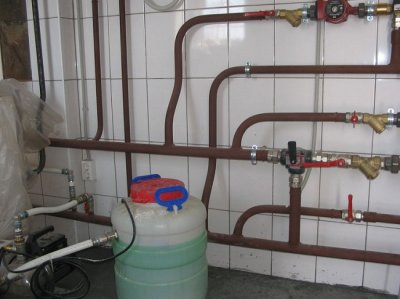
The market for goods is becoming larger and more extensive every day, and the number of means and types of heat carriers is increasing every day in geometric progression.
Antifreeze (non-freezing liquid) is used for car cooling devices.
Due to its chemical composition, it can be used even at record low temperatures. There is a top list of the most popular heating liquids and heating agents, recognized by experts and users.
Content
Water as a coolant for heating systems
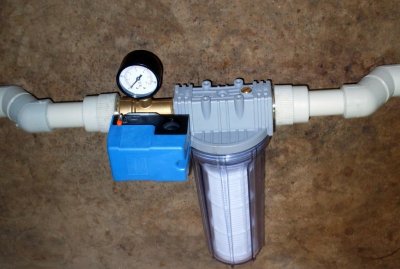
Water - the most popular and one of the world's natural heating means, which is used everywhere.
Water as a heat carrier is the hottest in terms of heat capacity.
It has the following feature: When the temperature changes, cooling or heating, the molecules expand, allowing you to spend less money to maintain a constant, optimized volume of liquid in the heating circuit.
Properties
First property: ability to change state of aggregation in 3 hypostases: solid, liquid and gaseous. This is due to the increase in temperature (from solid to liquid: +1 °C, from liquid to gaseous +100 °C).
Second by value the property became surface tension. Due to this characteristic, water, gathering in a gaseous state - in clouds, easily turns back into liquid - in rain. Without this property, the water cycle in nature would be impossible.
The third characteristic: the acidity in water always increases.
Reference. There is no scientific explanation for this phenomenon, since the chemical formula indicates the presence of oxygen, which serves as a strong oxidizing medium.
Peculiarities
The most amazing feature: water, as an element, occupies more than 80% globe, leaving 20% other elements.
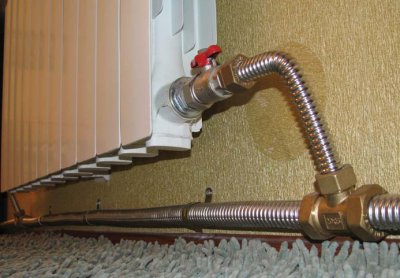
Water - the best catalyst. The fastest reactions occur with the participation of this magical liquid.
This is due to the fact that the molecules of water have an angular structure, and the presence of hydrogen has a positive effect on accelerating the reaction.
Energy generated during the transition from one state of matter to another the result of the breakdown of hydrogen bonds, from which energy comes out in large quantities.
Pros
- Fast circulation due to lack of viscosity. Water is quickly delivered through pipes to the desired location and returned back to the three-way valve or collector cabinet.
- The heat capacity of water is one of the highest, which allows it to be heated to maximum degrees.
- Water is a natural element, which means the most environmentally friendly substance.
- Purchasing water does not require any expenses and is always at hand, due to which its low cost and practical application put it in one of the leading positions in the heating equipment market.
Cons
- Water causes rust or corrosion within a few months even the most durable equipment. Corrosion causes damage to devices, reducing the performance of devices over time. Longer 4-5 years the equipment will not last, will deteriorate, and repairs will be required due to the occurrence of small leaks.
- The freezing threshold of water is quite low, therefore, after a long period of non-use of the heating structure, it is almost impossible to heat the house again, because the water has simply frozen and cannot start moving.
- Another significant disadvantage of water is its composition.: Often even the purest liquid contains salts that change the final composition of the water. Small crystals scratch the inside of the pipe, accelerating corrosion, catalyzing this reaction.
Antifreeze or non-freezing liquid
Another popular liquid for heating rooms has become antifreeze or “antifreeze”.
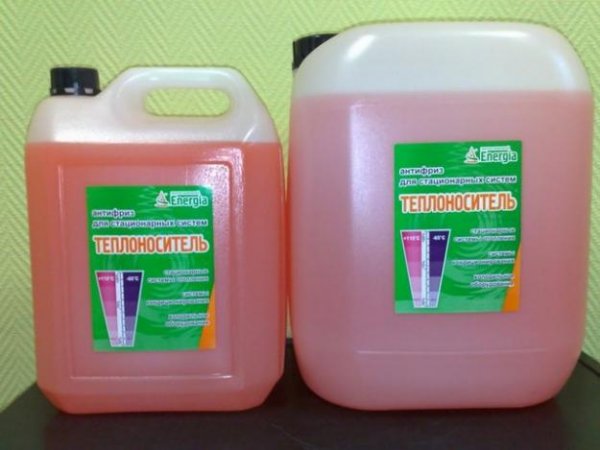
Photo 1. Two canisters of antifreeze for stationary heating systems from the manufacturer Energia.
Features of use and composition
"Antifreeze" is often used in regions with extremely low temperatures, where water cannot melt to a liquid state until summer.
Important! Antifreeze should never be used together with water. When these two liquids are combined, the antifreeze is diluted and loses concentration and properties.
Increased acidity of the composition. Unlike water, which is also an ecological product, despite the constant news about the decline of its actual purity, antifreeze 70% more acidic natural element due to its chemical "pedigree".
Pros
- Low freezing point. Comprises from minus 15 to minus 30—37 °C. This factor depends on how diluted the chemical component of the product is.
- Despite its acidity, antifreeze practically does not react with pipe nozzles, which increases the service life of heating devices. Repairs are required once a 15-20 years, much less frequently than when using water as a heating medium.
Cons
- Price. It is easy to buy antifreeze: it is sold in any store, even a hardware store. But it is worth considering that you need to stock up on this substance carefully. Unlike water, "antifreeze" is not a handy tool.
- Acidity. To ensure that this type of liquid flows through the pipes, special gaskets made of plastic and rubber are installed.
- Viscosity. Due to this lack of liquid, the heating device will operate much slower than when filled with water.
- Antifreeze and its fumes are dangerous to human life. If a pipe suddenly leaks, the risk of getting a chemical burn from close contact or experiencing suffocation from inhaling hazardous substances (gas) increases several times, in contrast to environmentally friendly water.
Application of antifreeze
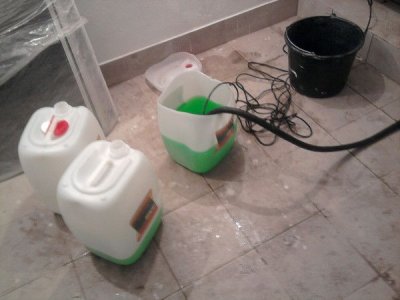
The peculiarity of the use of antifreeze is the ratio of liquid to water. Add two parts water to one part antifreeze.
It is worth considering that the ratio changes depending on the concentration of salts in the water, which is different in each region.
That's why Need to consult with Mr., which will accurately determine the ratio of antifreeze to water in the region.
The first days of operation it is necessary to control the connecting nodes heating equipment, so that in the event of a leak, the danger zone can be immediately neutralized and the breakdown eliminated.
Attention! You should not try to fix the place where the antifreeze has leaked on your own. This can lead to irreversible consequences and cause serious harm to your physical health. It is necessary to call plumbers.
When you shouldn't use antifreeze
Often, the ban on the use of this viscous liquid is imposed by companies whose production is based on metals that react poorly to the chemical composition of antifreeze.
For example, cast iron, zinc or tin. Due to its chemical composition, antifreeze quickly begins to corrode the inner lining. This can not only cause blockages, but also contribute to the formation of cracks and even holes in the pipes of the heating structure.
Propylene glycol
Another popular antifreeze for heating systems is propylene glycol.
What is it
Propylene glycol almost identical to antifreeze.
It has similar chemical action values and is almost as viscous, and the density of the liquid is several times higher than that of water.
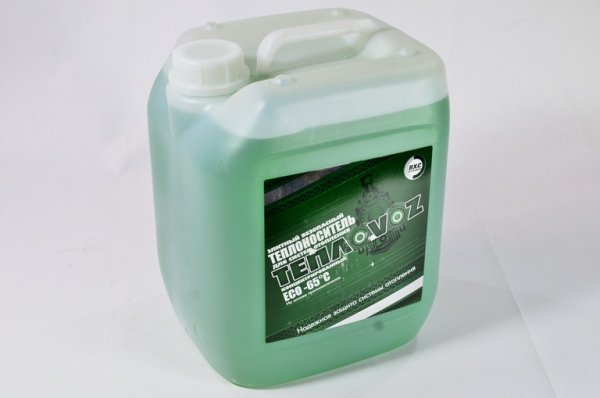
Photo 2. Canister with antifreeze liquid based on propylene glycol "Teplovoz". Withstands temperatures down to -65 degrees.
Although, despite the “antifreeze”, the density of propylene glycol does not affect the maximum and minimum temperature and crystallization.
Pros
- Unlike antifreeze, propylene glycol is much easier to mix with water. and does not require concentration and strict adherence to proportions. Because of this, it is used with less rigid gaskets inside pipes - the acidity is diluted better.
- When mixed with water or other heat carriers in the circuit, propylene glycol greatly increases the temperature range to which it can drop, without fear of liquid crystallization. Often due to this chemical composition, this viscous compound is used in some of the coldest regions of the world.
- Propylene glycol fireproof And much less toxic than antifreeze.
- Last but not least, safety. Propylene glycol capable of self-decomposing, does not contain any factors that affect the physical condition of a person and safety, unlike "antifreeze". The environmental friendliness of the product is much higher, however, it is inferior to water.
Cons
- The first and main disadvantage of this substance is the cost. It is possible to buy it, but constantly maintaining the required amount of the composition will be a problem for people with average incomes in 20-35 thousand rubles.
- Not recommended for use with pipes made of zinc, tin and cast iron.
- Viscosity slows down the distribution of liquid in the heating circuit.
Application
Usually there is nothing complicated in using propylene glycol in a heating structure. First, it is necessary to replace the previous coolant, if it was already used not with water, but, for example, with antifreeze or other fuel. After performing this nuance the reconciliation scheme is the same as for the "antifreeze".
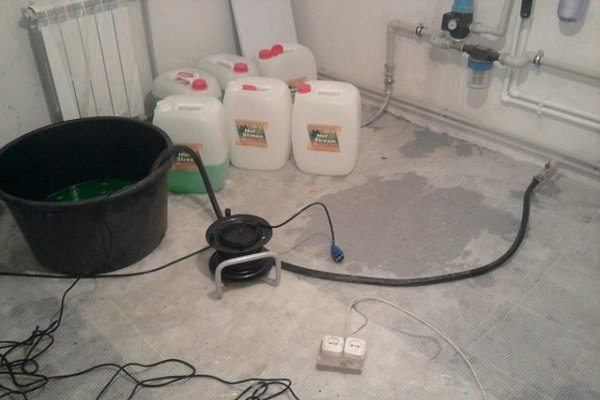
Photo 3. The process of filling the heating system with propylene glycol liquid. A large container is needed to mix the substance with water.
Turn on the device, slowly increasing the power supply so that control the process of sudden leakageIf this does not happen, then the power can be turned up to the desired temperature and you can forget about repairs for the next half century.
Antifreeze
Antifreeze is also used in heating systems.
What is this?
This substance is very similar in components to “antifreeze”, but it has been added to the composition a little ethylene glycol. As a result, the crystallization temperature changed and, unfortunately, the amount of chemicals increased. Tosol — the most poisonous of the liquids listed above.
Pros
Corrosion when using ethylene glycol is reduced to such an extent that the metal, functioning with this liquid, forms a special protective film on its own, preventing the formation of rust. This extends the service life by a few years due to the independent strengthening of the pipe walls.
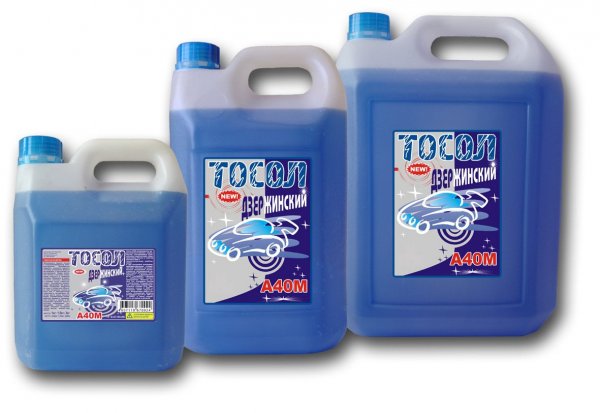
Photo 4. Three canisters of Dzerzhinsky antifreeze, which can be used for cars or heating systems.
Cons
- Due to the formation of a protective film heat transfer and heat reception of pipes deteriorates, causing them to overheat or cool down significantly in a short period of time. The maximum temperatures begin to destroy everything that is near the pipes.
- Ethylene glycol is highly toxic. Unlike antifreeze, the substance should not be touched at all. A drop of this non-ecological product can harm a person, not to mention the gases, which are simply deadly.
- Reacting with water and metal, antifreeze leaves decay products that soon lead to clogging of pipes and their increased inoperability.
- It is strictly forbidden to use with tin, cast iron and zinc. even with special attachments.
How to upload to the system
- Replace the pump and put on the attachments.
- Flush the pipes from the previous substance content. You need to approach the work responsibly, because the reaction of antifreeze with other liquids can harm a person’s physical health.
- Connect the pump to a special canister with antifreeze and perform the transfusion.
Attention! You shouldn't touch the liquid with your hands. You need to put on gloves and work in a well-ventilated area.
Useful video
Watch the video to learn the best way to fill your heating system.
Heating Liquids Market
When choosing means for heating devices, it is necessary to approach this issue carefully. Not suitable for all metals certain compositions.
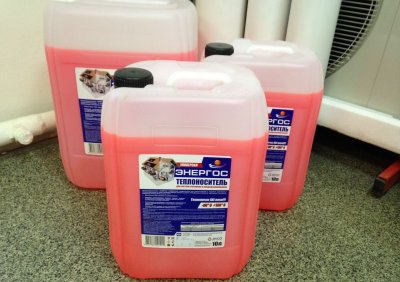
For some particularly toxic solutions you need to buy special attachments, so that the heating device functions normally.
The modern market has many different liquids used for heating structures of residential buildings.
But it is necessary to select the substance taking into account the metal of the device, the type of coolant and the financial resources. It is also worth paying attention to the operating recommendations from the manufacturers themselves.









Comments